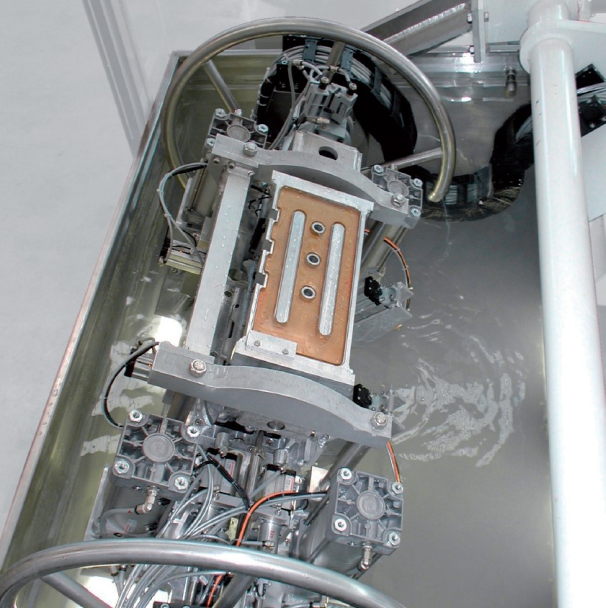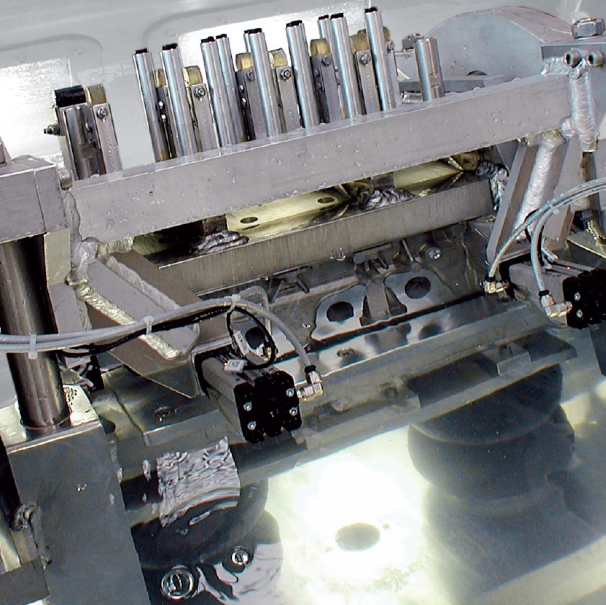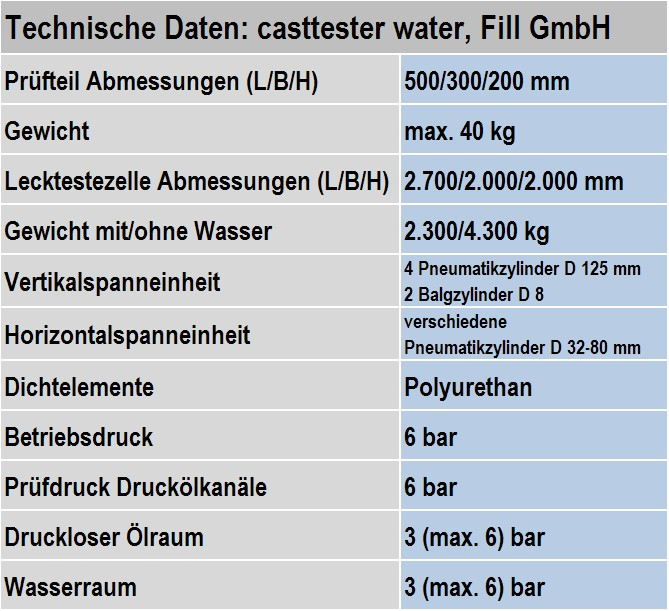Water bath test
Process for testing the tightness of castings.
The water bath test or “bicycle tube” method is an established test for series application. After clamping, the casting to be tested is sealed,
(extensively) pressurized, submerged in a water bath and often also rotated (Fig. 1, Fig. 2).
In case of leakage, (air) bubbles emit from the casting. The occurring air bubbles can be detected and the leak can be localized by the test personnel. Localization of the leakage is one of the advantages of this test method. However, it is a subjective test method as the decision on tightness or leakage is taken by test personnel. The reliability of this test method can be very high as the following example illustrates: If an air bubble appears at the casting every 30 seconds, this indicates a leakage rate of approx. 1·10−4 mbar l/s. In practice, however, mostly larger leaks can be detected due to short test intervals.
Automatic detection can be realized by means of ultra sound. In water bath testing, the air appearing in case of leakage is detected by an ultra sonic system. The test system thus becomes objective and sensitive. The test is evaluated by means of an ultra sonic gas bubble detection system. Measuring the runtime of the ultra sonic signal from the transmitter/receiver to the leakage bubbles enables localization of the leakage. This makes the process one of the few automatic leakage test processes including localization.
A disadvantage is that the casting needs to be dried after testing. This test is usually applied for more complex castings like cylinder heads or similar parts.
Additional references:
Leak test
Differential pressure test
Overpressure test




